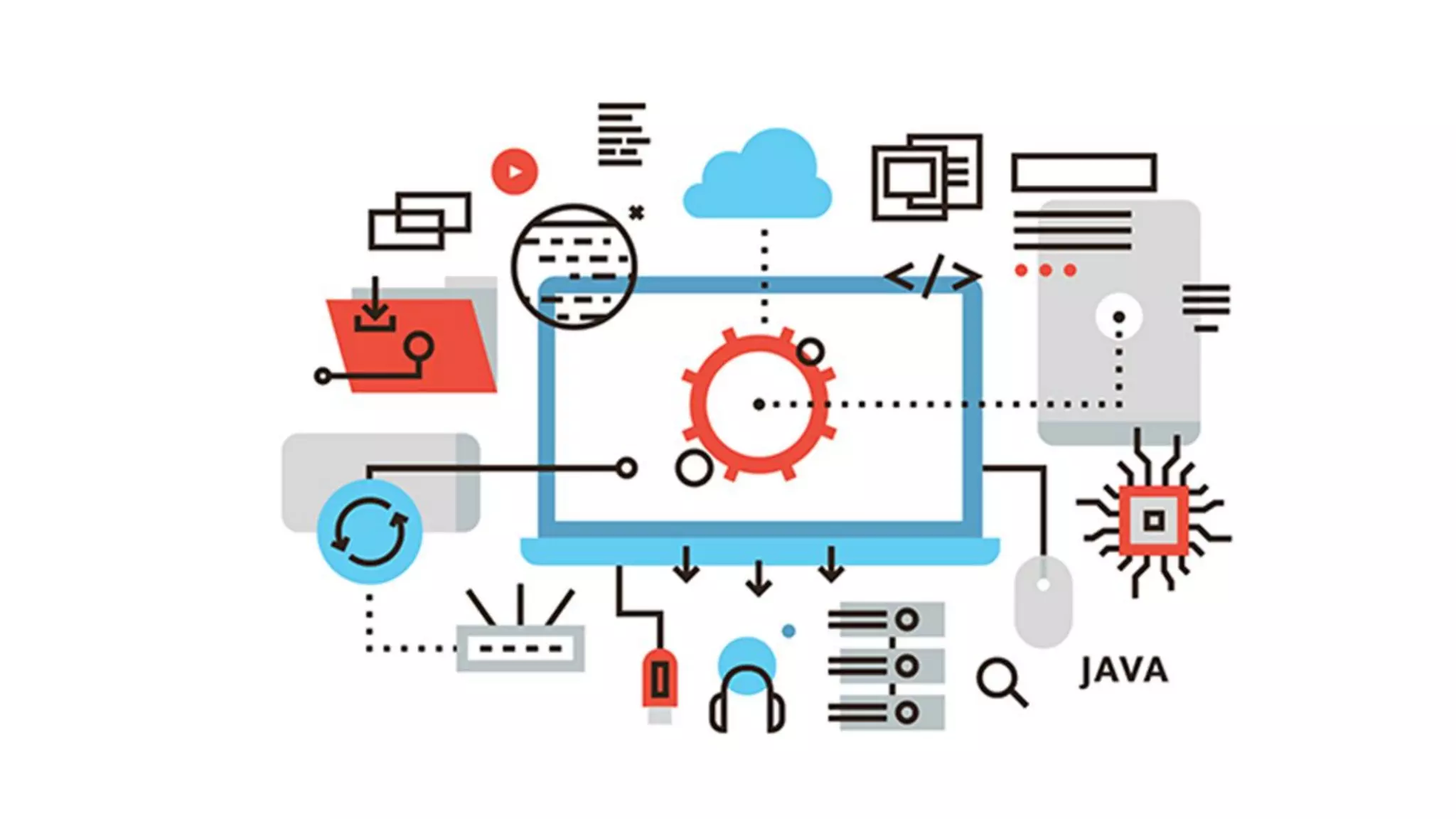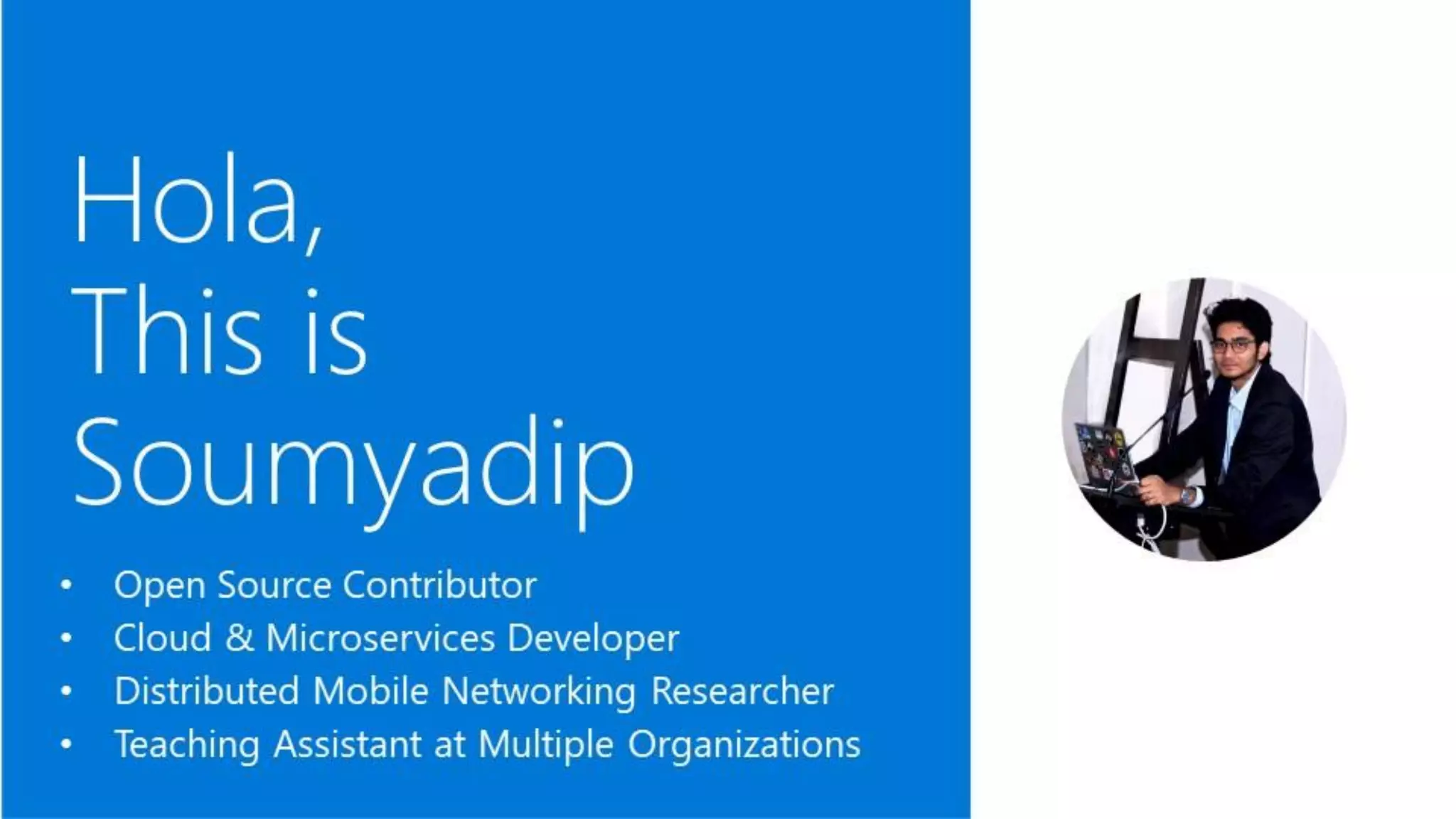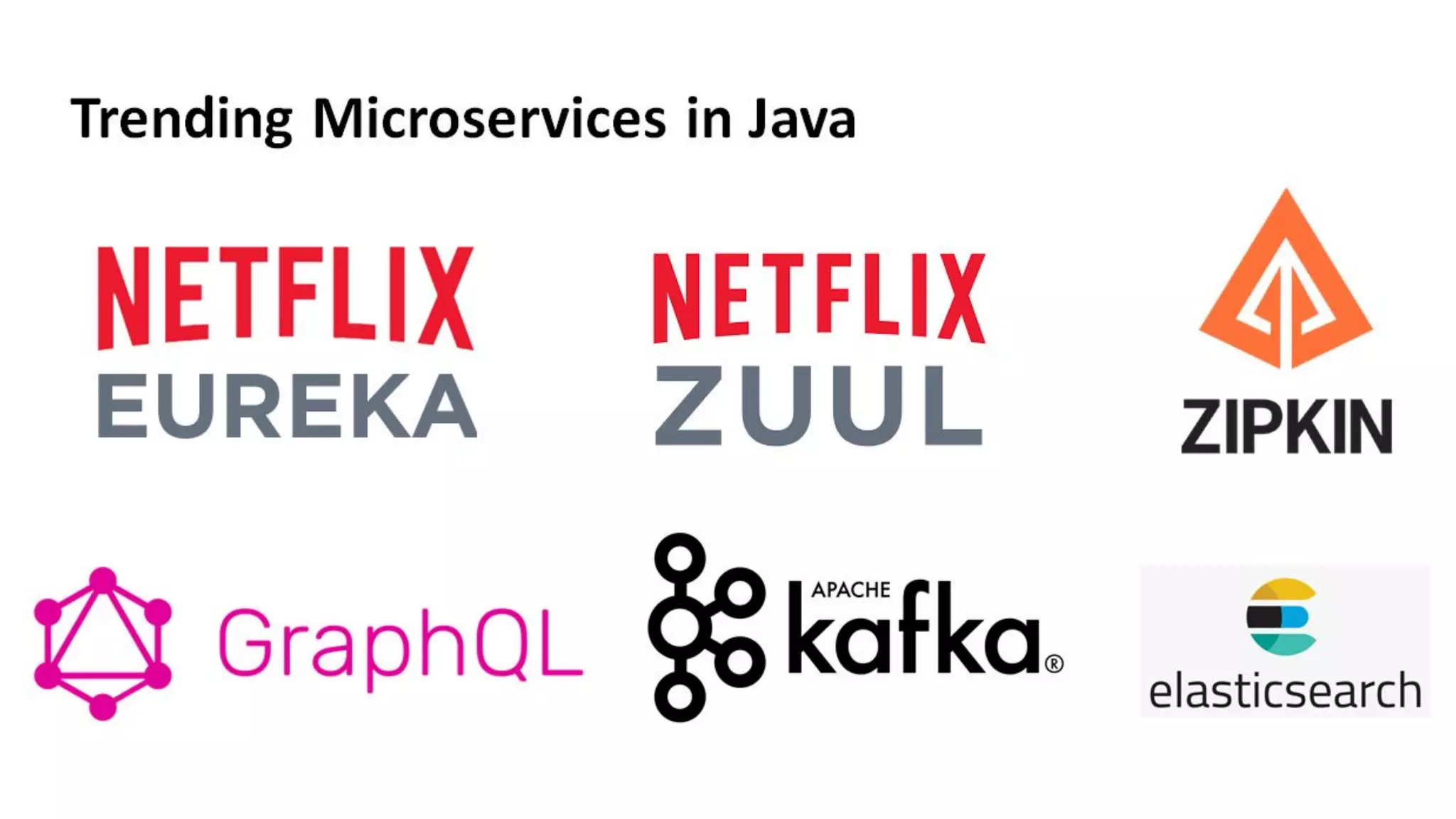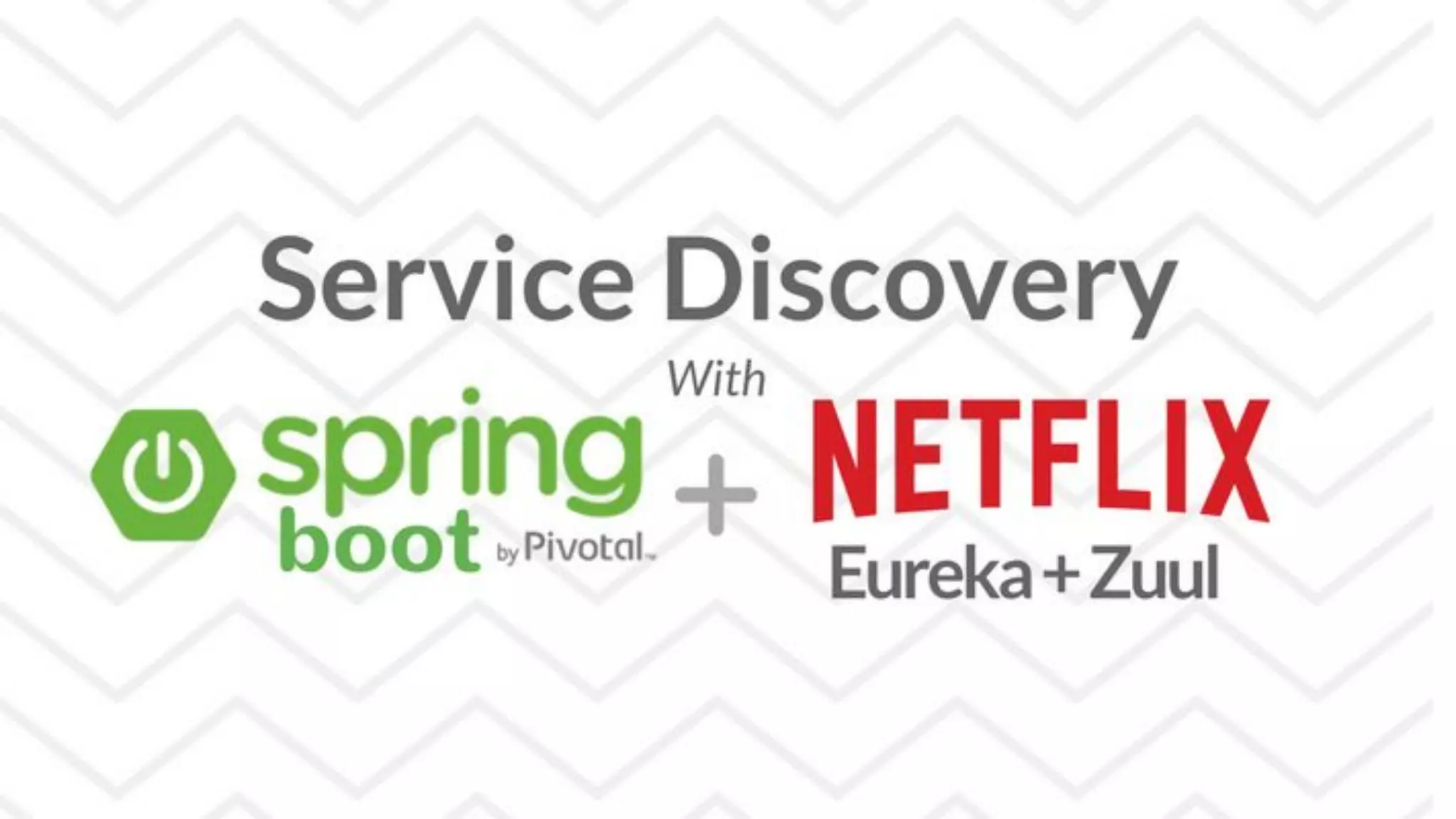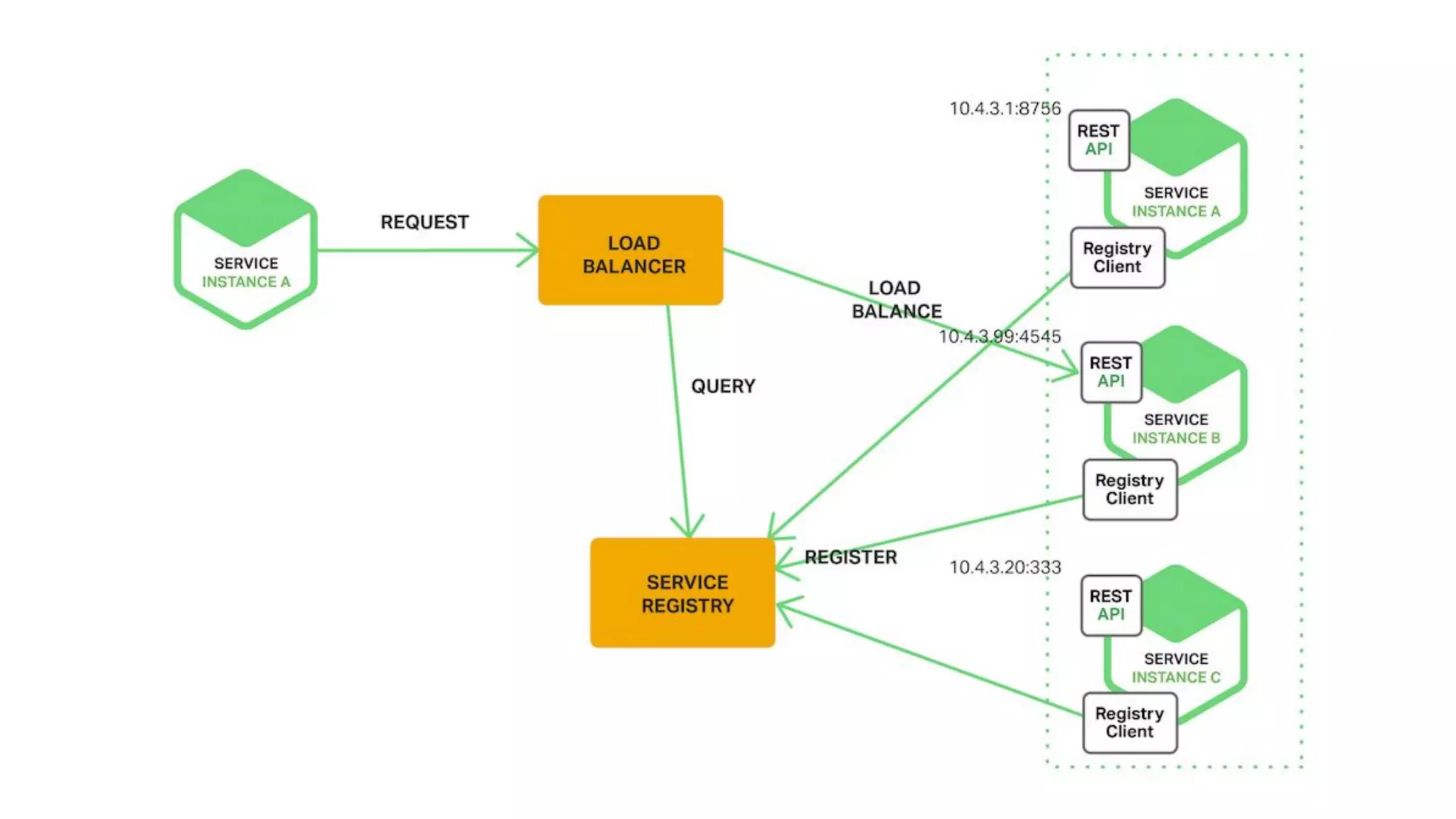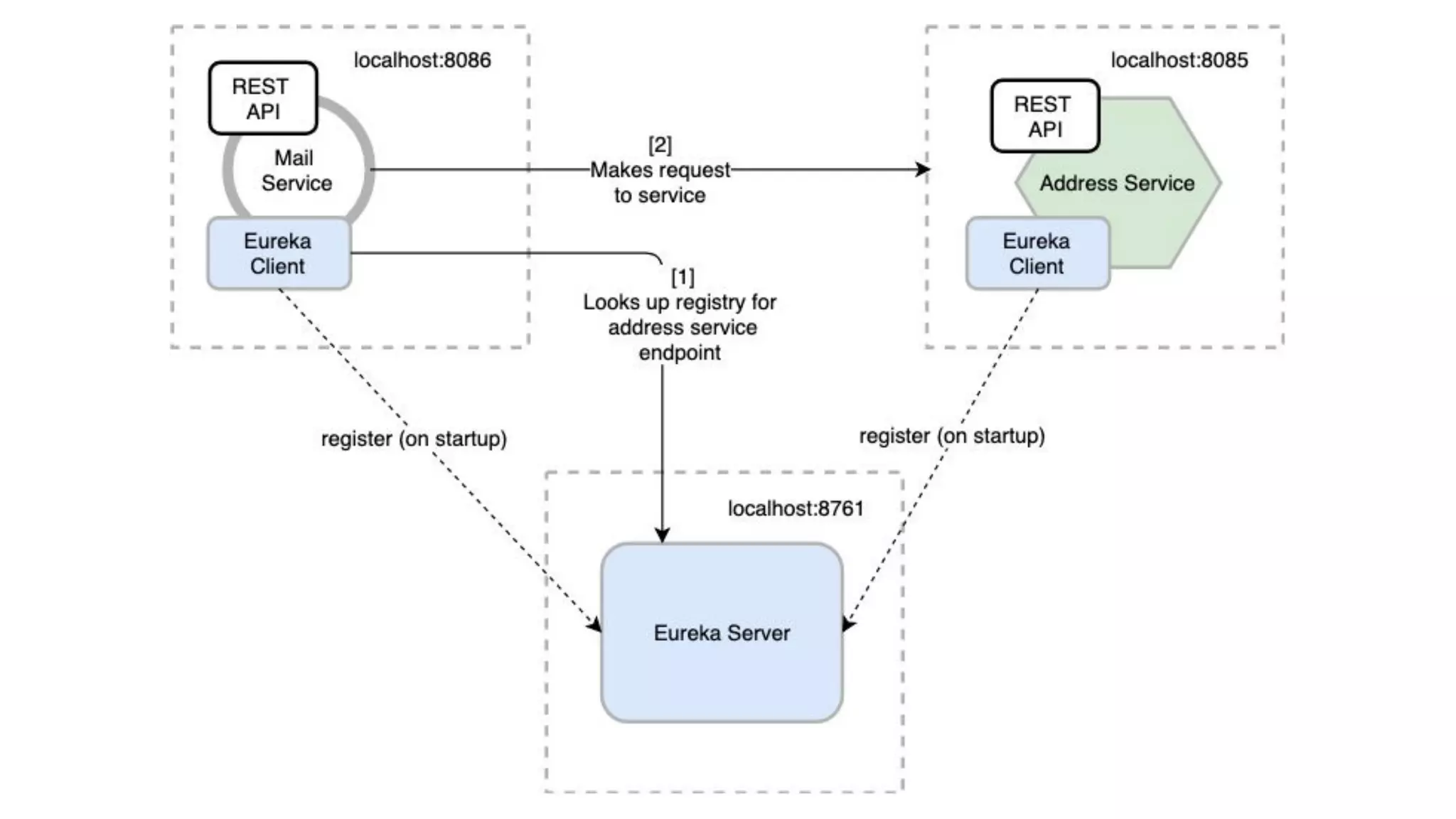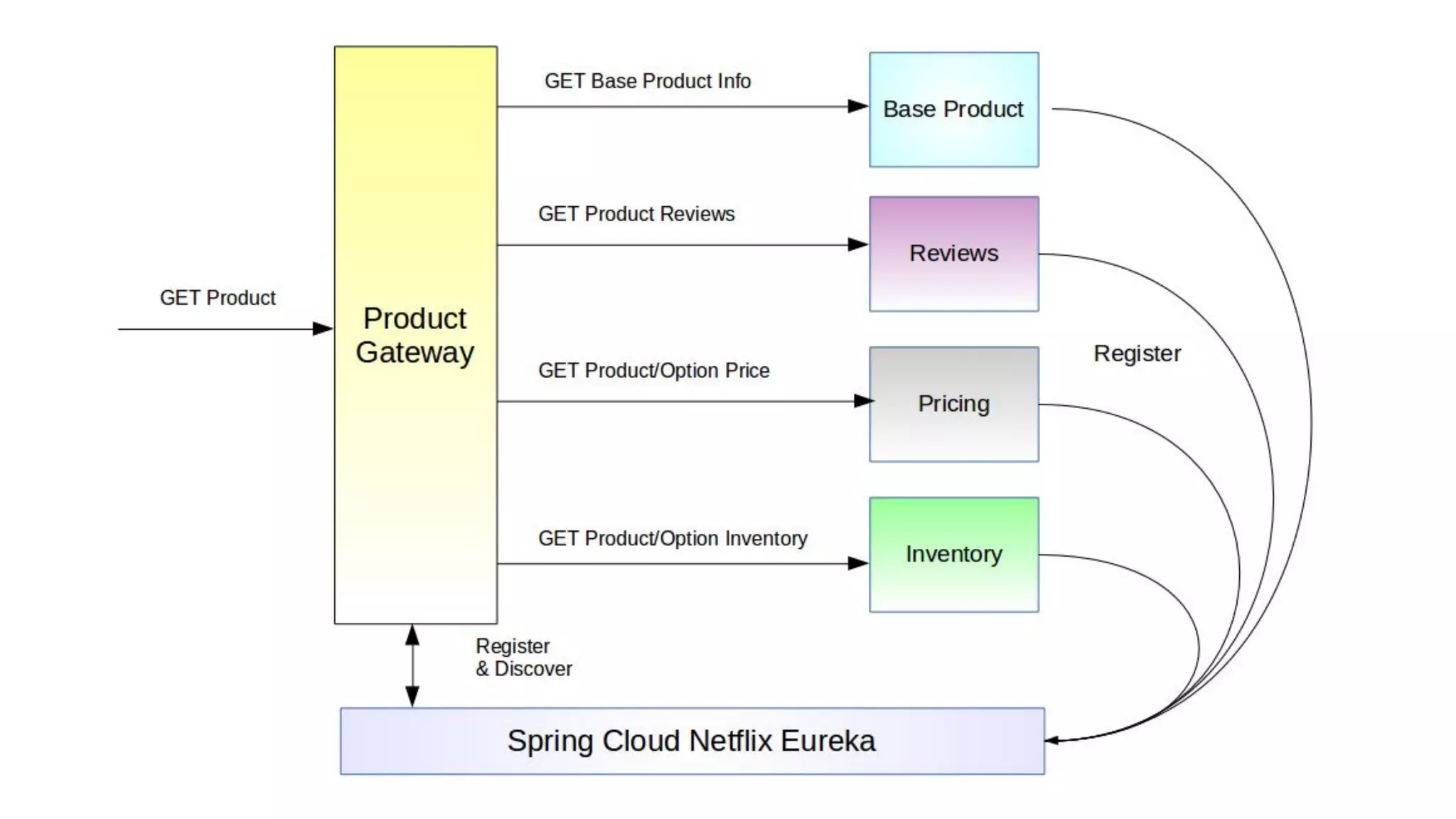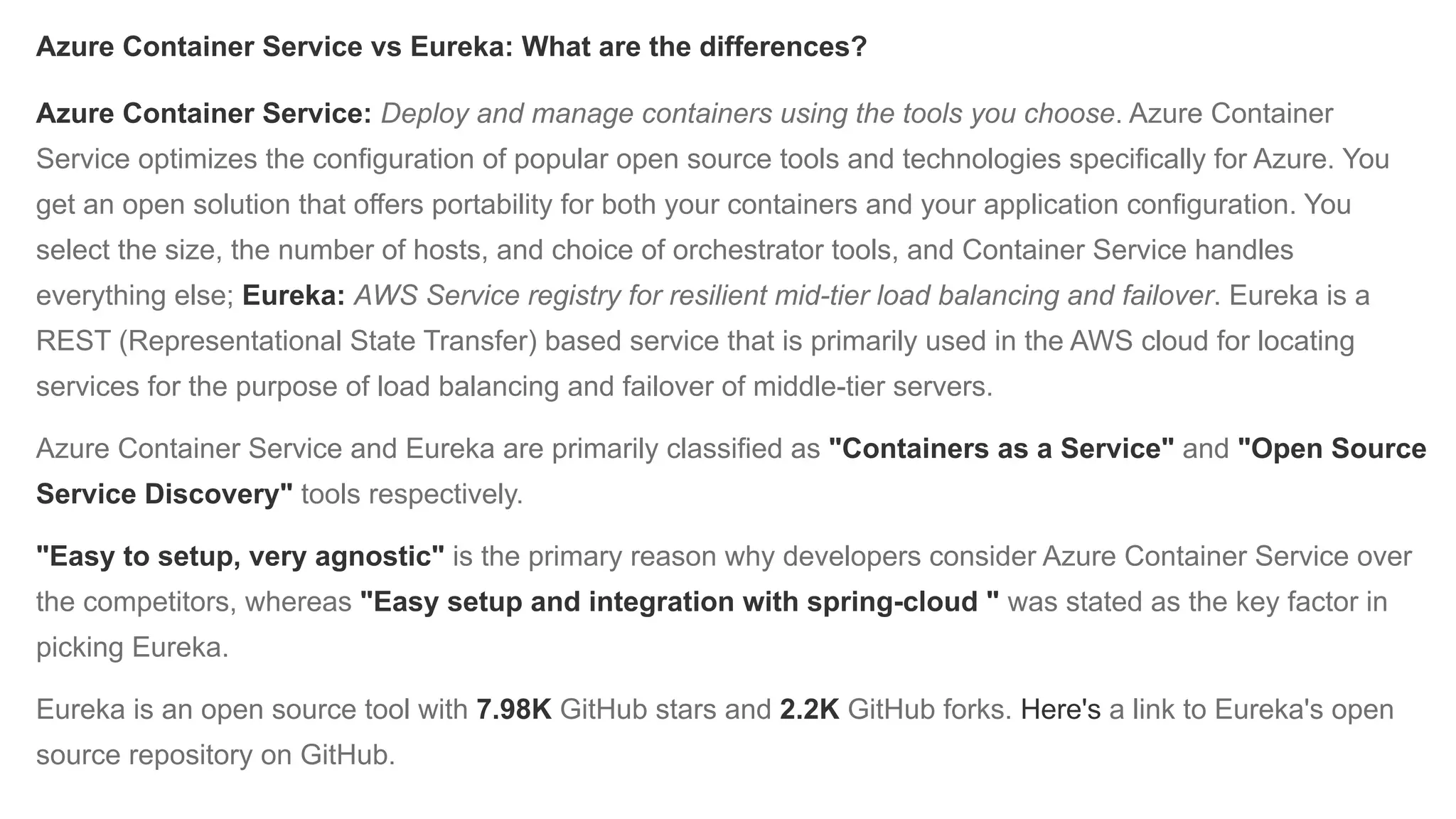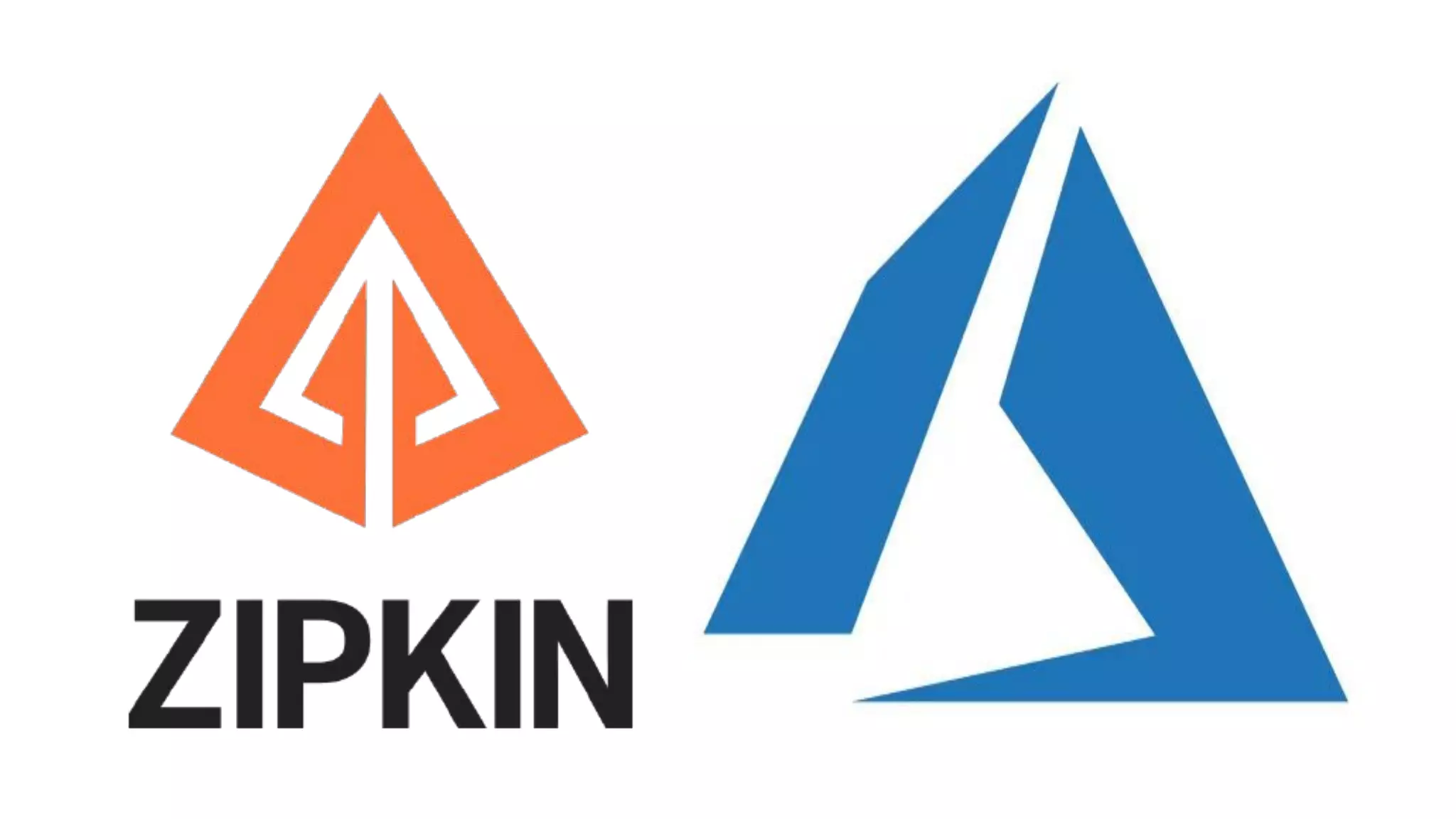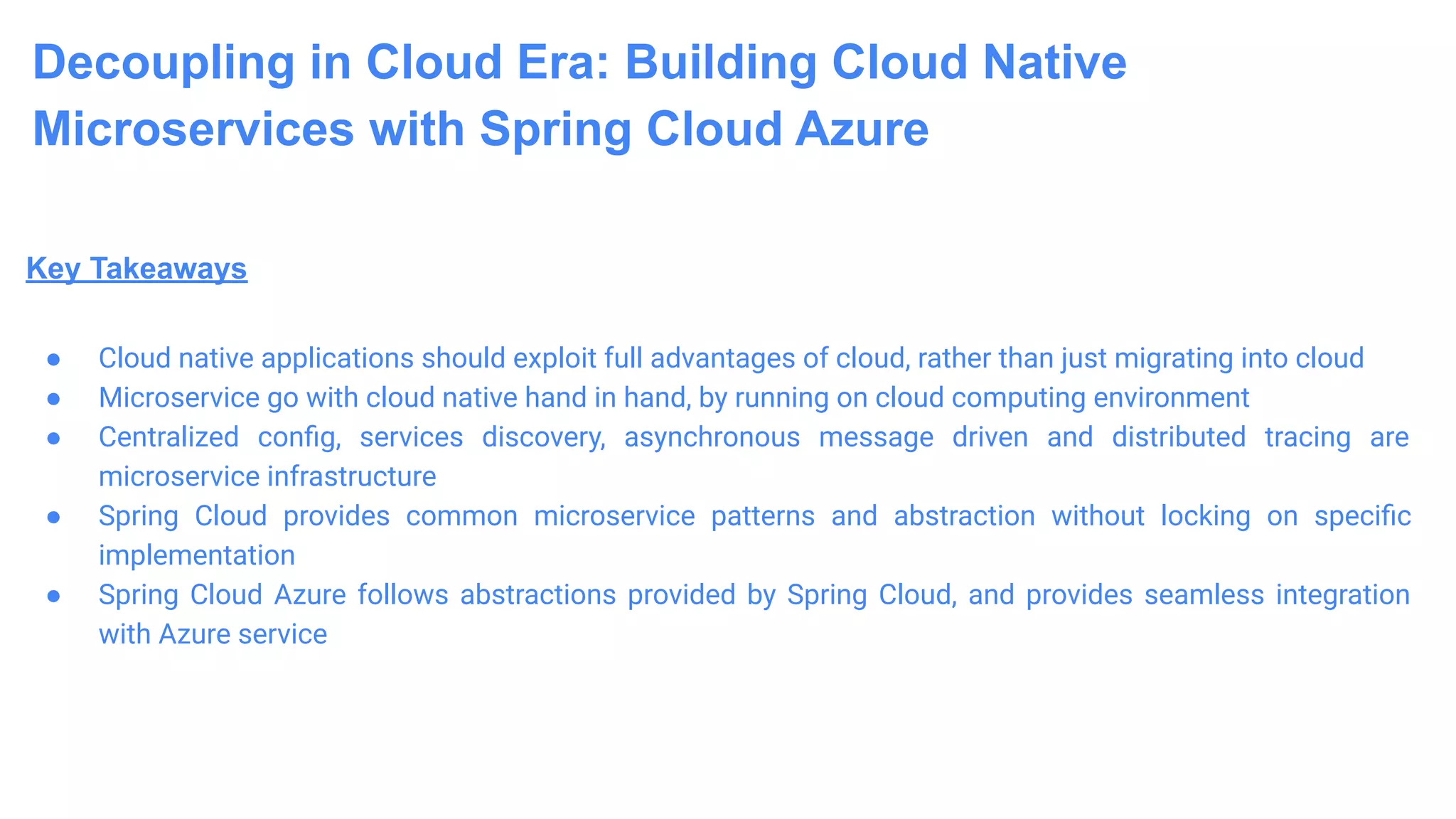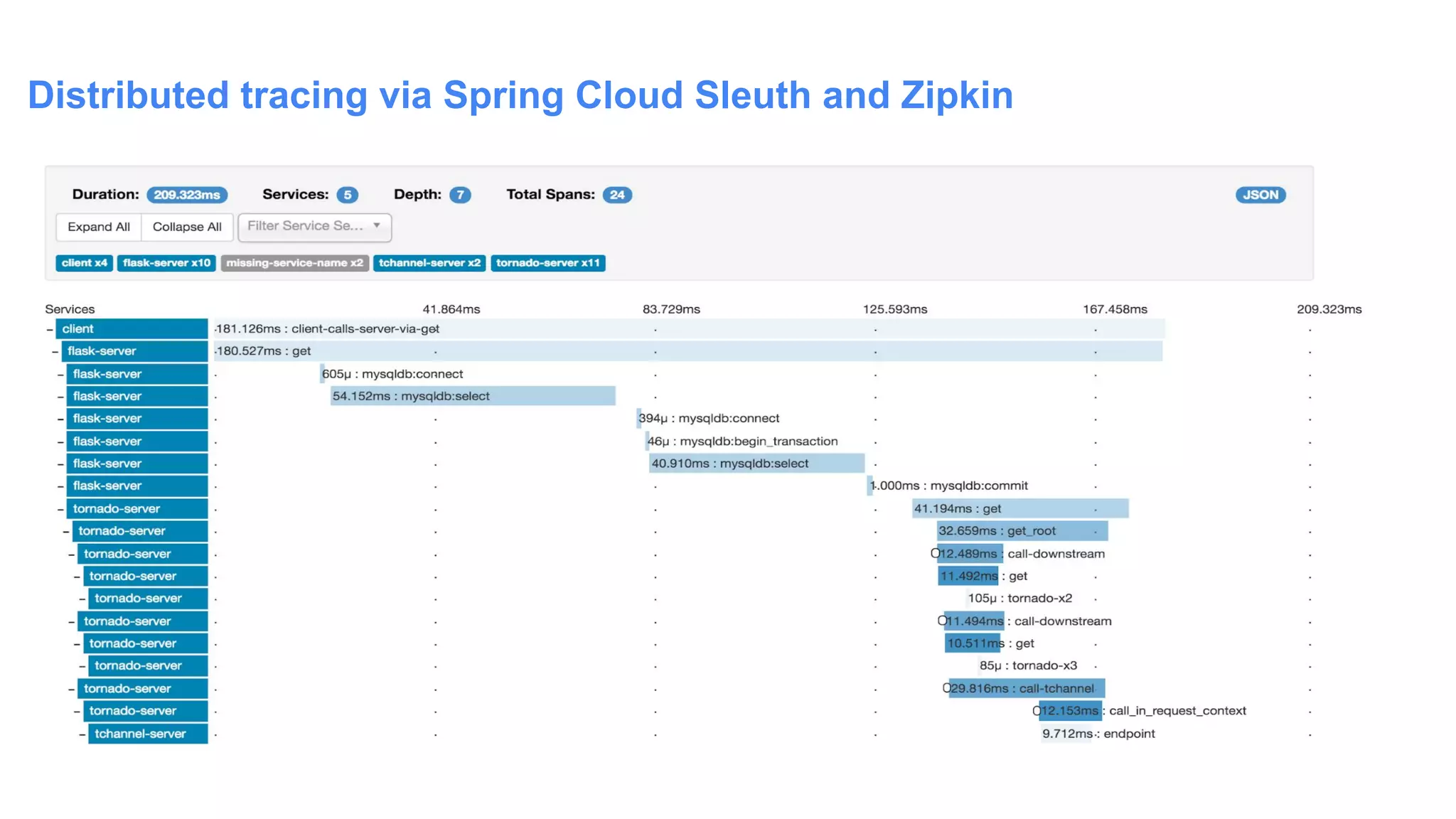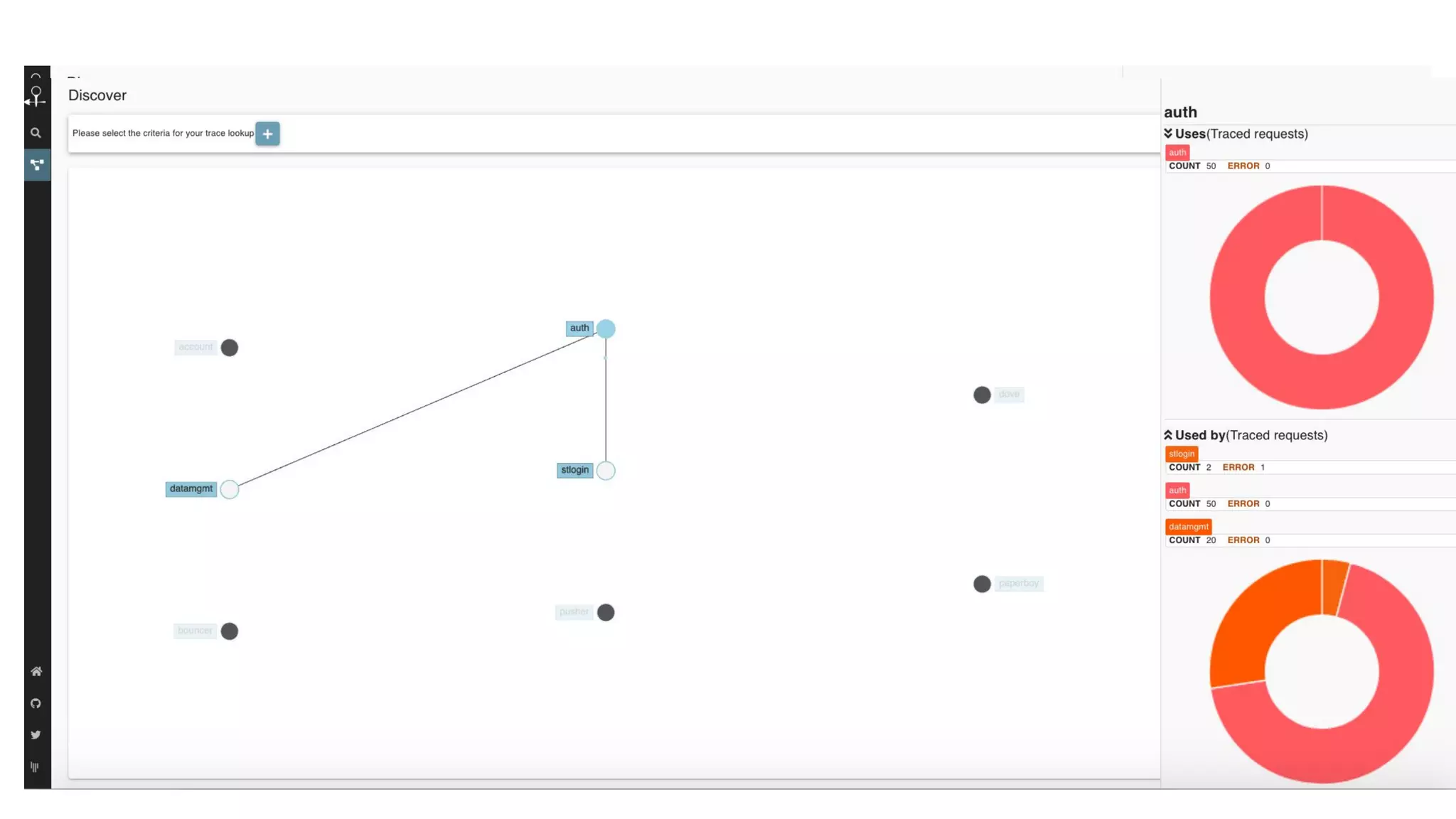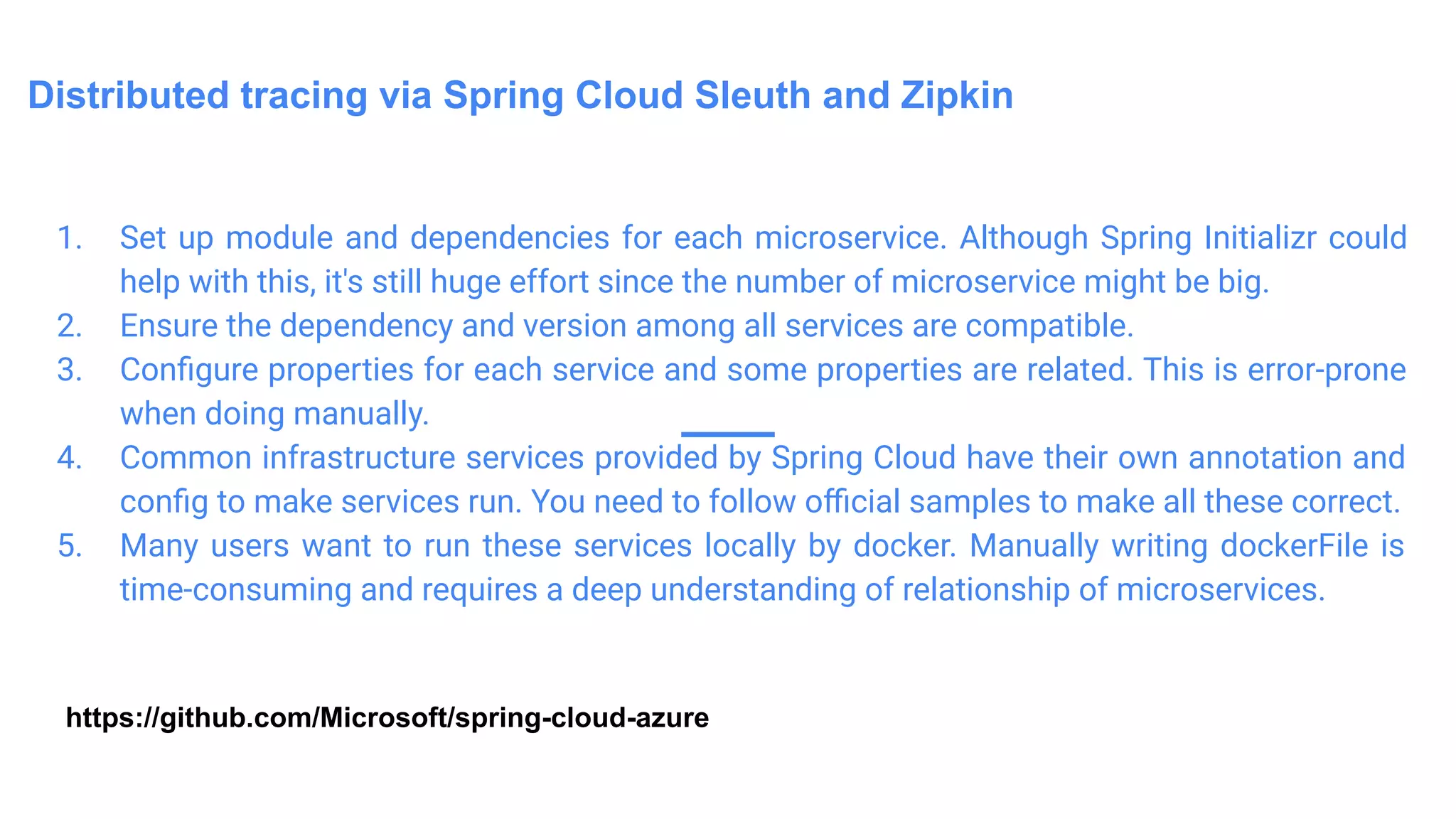Eureka is a REST-based service used in AWS for service discovery, load balancing, and failover of middle-tier servers, while Azure Container Service provides an optimized platform for deploying and managing containers. Both tools are categorized under different services, with Azure focusing on container management and Eureka on service discovery. Key considerations for developers include the ease of setup and integration, with Eureka being favored for Spring Cloud applications.
